The post How Test Automation Tools Speed Up Product Releases appeared first on nandbox Native App Builder.
]]>These testing tools run pre-defined scripts for testing, therefore allowing quick test execution free from human involvement. Faster defect identification and more effective testing cycles follow from this. Through their elimination of delays resulting from human error and manual testing procedures, test automation solutions enable teams to reach faster releases.
Increasing the Number of Tests and their Consistency
Automation of tests makes it possible to try more scenarios and make sure that no part of the software is missed. Because automated tests can run on many platforms, browsers, and devices, it’s easier to see if there are any problems with compatibility that might show up in different settings. This consistency in testing makes sure that apps work the way they’re supposed to, no matter what platform the customer is on.
The use of automation also helps keep tests consistent, since the same test scripts are run each time. This gets rid of any problems and makes sure that tests are done again under the same conditions. Being able to run tests often gives developers quick feedback, which helps them find problems early and keep quality standards high for all versions of the product.
Getting the Testing Done Faster
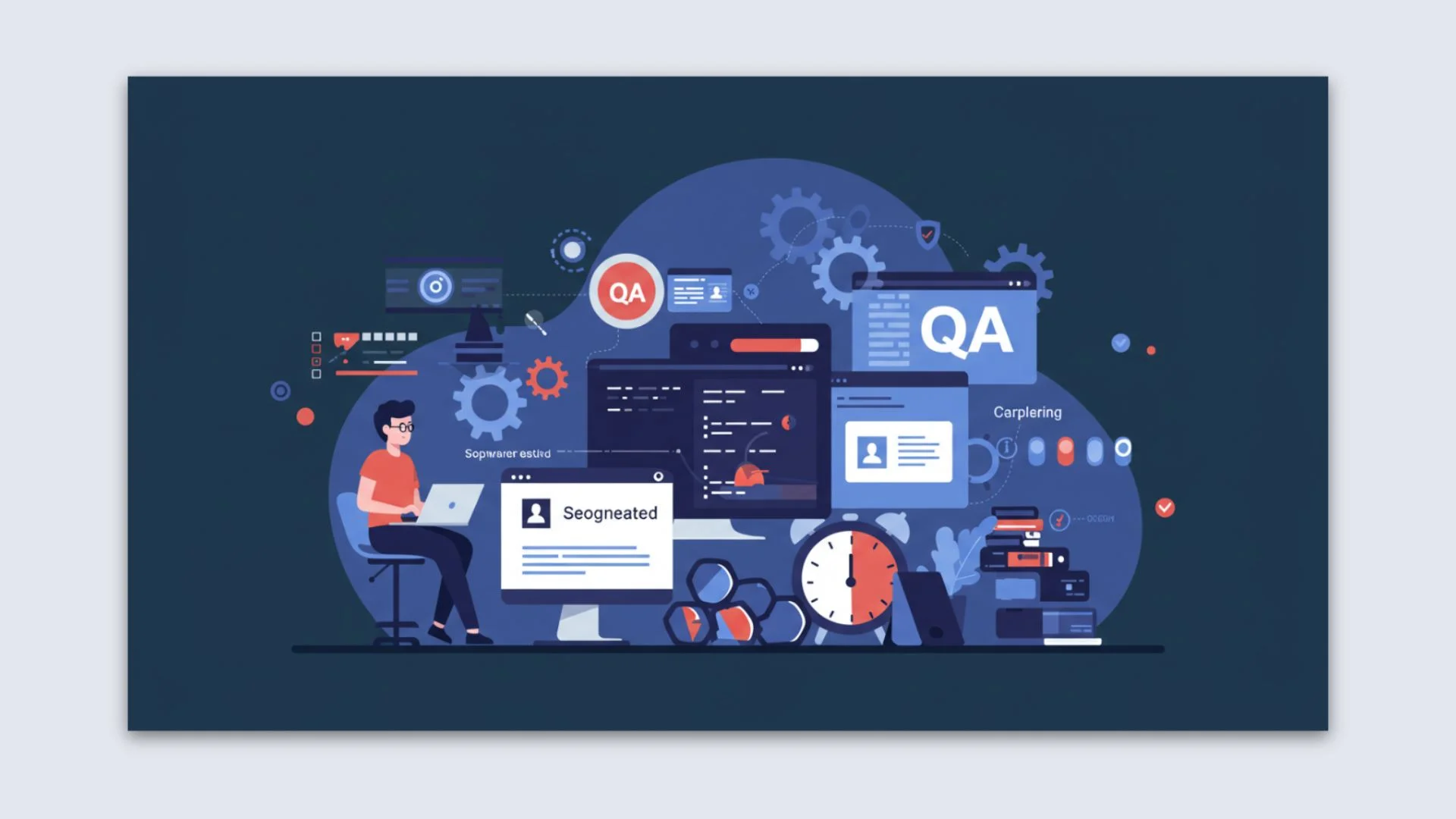
The ability to speed up the testing process is one of the best things about automation. Without automated testing, each test has to be run by hand, which takes a lot of time. Test automation tools, on the other hand, can run multiple tests at the same time, carrying out several test cases. This cuts the time spent on testing by a huge amount.
Also, automatic tests can be run over and over again without any extra work or time. This means that tests can keep running even as new features or changes to the code are added. This makes sure that the software keeps working as development goes on. Automation speeds up the development process by giving faster feedback. This means that the product can be on the market more quickly.
Value for Money Over Time
Even though test automation tools cost money to set up and get resources for the first time, they are very cost-effective in the long run. Automation cuts down on the need for human testing, which can take a lot of time and work.
These are some of the most important perks of automation’s low cost:
- Less need for human help during the testing process.
- Early discovery of flaws enables their fixing for less cost.
- When resources are handled effectively, teams can concentrate on areas of most need for development.
Using Automation Tools will Help You Speed Up Development

Including solid test automation solutions can significantly improve the efficiency of software development processes sought for by businesses. Several systems provide tailored solutions that enable development teams to automate their testing procedures. These solutions offer complete frameworks that are simple to add to current development processes. This makes it easier for teams to set up automated tests. Adopting such tools can lead to smoother releases and better collaboration among team members, ultimately resulting in faster delivery times.
Software developers require testing tools if they are to release their goods onto the market quickly. By testing more consistently and faster, covering more areas, and being cost-effective, these technologies enable teams to produce better products sooner. Adding them to continuous integration and delivery processes speeds up development even more. By using test automation tools, teams can improve their workflows, cut down on the time they spend testing by hand, and eventually get products to market faster.
Test Automation Tools for Faster Releases: Conclusion
Using test automation tools for quicker release is not only a wise decision but rather necessary in the fast-paced technology world of today. These tools cut manual testing, simplify development, and produce high-quality products in record time.
nandbox no-code app builder can give you the same edge—speed, efficiency, and control—if you’re managing a development process or creating an app. nandbox lets you create and launch mobile apps without writing a single line of code using built-in tools to assist agile processes, integrations, and seamless updates.
With nandbox, start building apps smarter and quicker—just as test automation does for your code.
The post How Test Automation Tools Speed Up Product Releases appeared first on nandbox Native App Builder.
]]>The post Push Notification Strategy: Engage Without Annoying appeared first on nandbox Native App Builder.
]]>Below, we’ll break down strategies you need to employ in order to optimize how you utilize push notifications.
Optimize Your Timing
While the content of the notification itself is of utmost importance, so too is the timing of when to send it. The same notification, sent at different times, can yield vastly different results! The right message sent at the wrong time can still annoy a user. Here are rules of thumb when developing a notification schedule:
1. Understand User Behavior

Analyze when people use your app the most. Most notifications will be sent during the weekdays, from 6 to 8 AM and 10 PM to 12 AM. This makes sense, as these are the hours when most people are off work. But that doesn’t mean you should follow such scheduling blindly. If your app is all about entertainment—such as, say, a mobile game—your users will most likely be most active at night. However, if your app is about productivity, then prioritizing the mornings may make more sense.
2. Time Zone Awareness
Global apps must always consider different time zones. A message sent at 9 AM in one region may arrive at 3 AM elsewhere—hardly an optimal engagement opportunity. While seemingly obvious, one would be surprised at how often app developers forget to consider this.
3. Frequency Control
Avoid overloading users. A few well-timed and quality notifications every week are far, far more effective than multiple messages a day. Most people will find such frequency incessant and intrusive, and, as said above, it is one of the most common ways to make users delete your app.
Engaging Push Notifications: Personalization Techniques
Generic notifications are easy to ignore—if not even make users annoyed. The more personalized notifications are, the more likely users will actually click on those notifications.
1. User Preferences
Always allow users to customize the type and frequency of push notifications from your app. While some notifications might be essential and cannot be controlled by the user, it’s still generally a good idea to give as much control as you can to your user.
2. Dynamic Content
Use data to craft notifications based on each user’s behavior. For example, if a user frequently uses it during a specific time period, send notifications around that time. Or if they usually engage with a specific feature, send updates or tips that enhance their experience with that feature. The more useful notifications are, the more users will appreciate and click on them.
3. Segmentation
One of the most common mistakes of app developers is thinking that their user base consists of only one specific target market. However, that just isn’t the case most of the time. Even a single market, no matter how small, will consist of users of differing interests, activity levels, and demographics. Segmenting your users into different groups makes it easier to send the most appropriate notifications to each user. For example, new users might receive onboarding tips, while power users could get notifications about advanced app features or even be open to receiving them more often.
A/B Testing Methods
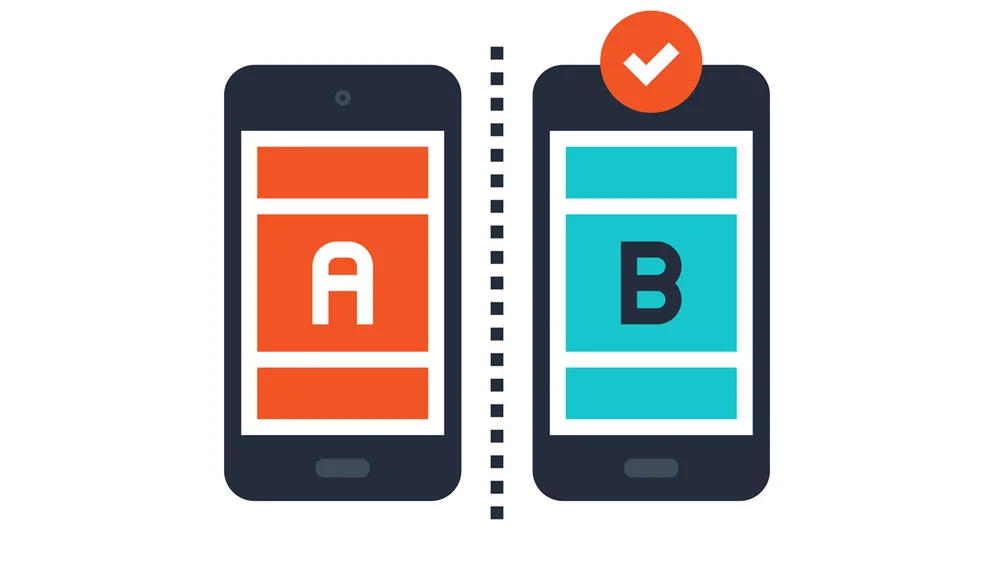
A good strategy is one that is consistently being fine-tuned. Performing A/B testing allows you to determine what works best for your audience—or even for each individual user.
Here are a few ways you can conduct A/B testing:
1. Test Timing
Experiment with sending the same exact notification at different times to identify when they are most effective.
2. Message Content
Test different writing styles, calls to action, and formats. For example, send “Don’t miss out—secure your data today!” to one group of users and send another group, “Enhance your security with our latest tools.”
3. Visual Elements
You don’t have to stick to mere text (or you do, if you find out that’s what works best for your users). Try using images or emojis in your push notifications to see if they’ll improve engagement. However, remember to only test one variable at a time. Testing too many things will lead to results that are hard to organize and gain insights from.
Engaging Push Notifications: Analytics Tracking
Numbers don’t lie! Data is the backbone of any marketing or business strategy. Only through thorough analysis of data can you make intelligent and informed decisions about your app’s notifications.
Here are a few data points you always need to keep tracking:
1. Engagement Metrics
Monitor open rates, click-through rates, and conversions—these help you understand how users respond to your notifications.
2. Churn Analysis
If uninstalls spike after specific notifications, it’s a sign to revisit your strategy (and stop sending those notifications).
3. Feature-Specific Insights
Track which notifications lead to what in-app activities. An ad notification may not always lead to purchases. And while that may not have been your initial goal, such data can still prove valuable moving forward.
User Retention Data
Push notifications are one of the most important aspects of user retention, but only if they add value. By analyzing retention data, you can identify which notifications lead to user retention—and which don’t.
Here are a few ways you can promote user retention through push notifications.
1. Re-engagement Campaigns
Use tailored messages for dormant users. For example, “We miss you! Here’s what’s new to explore.”
2. Loyalty Rewards
Notifications highlighting loyalty programs or exclusive discounts can entice users to return or keep using your app.
3. Long-Term Trends
Compare the retention rates of users who engage with push notifications versus those who don’t. This data can reveal how well your strategy is working.
nandbox App Builder
By providing a no-code platform for developing unique mobile apps that deliver consumers tailored, targeted messages, nandbox App Builder may assist companies in putting an engaging push notification strategy into practice. Businesses may quickly set up push alerts with nandbox that encourage user interaction without being intrusive. Businesses can make sure their alerts are timely, beneficial, and non-intrusive by utilizing features like segmentation, scheduling optimization, and pertinent content.
Push Notifications are a Double-Edged Sword
When executed thoughtfully based on a data-driven strategy, it can lead to dividends for your app. But overuse or mismanagement can be the very reason for your app’s decline.
The most important thing is to always consider the unique context of your app and its users. As a developer, you should always put yourself in the shoes of the users.
Whether you’re advertising a limited-time promotion, promoting a free VPN trial, or even just saying, “We miss you!” to dormant users, the key is relevance and respect for the user. Always keep this in mind, and you’ll always have a sound notification strategy.
The post Push Notification Strategy: Engage Without Annoying appeared first on nandbox Native App Builder.
]]>The post Developing an App Individually: Is It Possible? appeared first on nandbox Native App Builder.
]]>I know that some people hear the words “app development” and feel like they should run the other way. Why? Because they think of it as an extremely complicated task that they wouldn’t be able to carry out. However, individually developing an app is something that is not impossible. As a matter of fact, it is not even as overwhelming as some may think. In today’s digital landscape, individuals can develop their apps solely without help.
That is, thanks to many tools and platforms that have made it possible. People can nowadays do that without having to have comprehensive or even limited knowledge of coding or programming. In this guide, we will uncover how to individually develop an app efficiently and what this process will require.
In order to create an app in today’s digital era, you have to have creative app ideas, commitment, time-management skills, and access to the right tools and platforms that will help you do so. This article explores the essential steps, tools, and tips for solo developers, with insights from real-life success stories to motivate you. By the end, you’ll have a clear idea of what it takes to get started and whether solo app development is the right path for you.
Understanding the Basics of Individually Developing an App: What Skills Do You Need?

Individually developing an app is something that isn’t small or simple. However, it isn’t as complicated as it sounds. All you need to understand is that there are certain skills and tools that you are required to know and use. Let’s start with the backbone of it all, which is the technical side of it. Coding is known to be essential in the process of developing an app. However, today’s advancements allowed us to think outside the box and stop being limited to the fact that we had to study programming and coding in order to create an app by ourselves. Let me talk traditionally first in order to help all fellow coders, and then I’ll move into the folds of coding an app without really coding an app. Languages like Swift, Kotlin, or even JavaScript are popular choices for those who consider opting for the technical way.
Each one of these languages is suited for a certain and different type of app. The base doesn’t stop with coding, though; you have to be familiar with UI/UX design. Because it helps you craft an excellent interface that your app users will love and appreciate. Tip? Diving into some testing processes will never hurt anyone. As a matter of fact, it adds greatly to your abilities and knowledge base. Testing helps you determine whether or not your app is actually running smoothly across devices or if it needs enhancements to do so.
The Non-Technical Side to Individually Developing an App
This is a vital side that you should not overlook. Non-technical here doesn’t mean the limited knowledge of coding or programming. No, it means taking care and enhancing your non-technical skills. Like project management and marketing. Project management for one keeps you organized and on track. Marketing helps you get your app on the surface for potential users to discover and explore it. Simply put, it helps you get known and have better exposure through various strategies that you should conduct thorough research for.
Now, ask yourself: Are you prepared for this mix of roles? Self-assessment is crucial. Think about your strengths; think about what you can and cannot do. Are you a creative problem solver? Or are you more of a strategic planner? Identifying yourself and your role will help you know what you need to gain in order to go through the process of individually developing an app without facing any challenges or hassles. Balancing your knowledge will help you through your journey and will allow you to get to know your strengths and weaknesses better!
Choosing the Right Tools and Platforms That Will Help Through Individually Developing an App
When it comes to developing your app solo, equipping yourself with the right set of tools will help you greatly. So where should you start? For many individual developers, popular tools like Flutter, React Native, and Swift offer extensive resources and flexibility. Flutter, for example, is Google’s open-source toolkit that lets you create natively compiled apps across multiple platforms from a single codebase. It’s known for its fast development cycle and great community support, ideal if you’re aiming for high-performance apps with a single code setup.
I know that you might be cynical at this point, saying that this guide is now too technical for your limited knowledge; however, bear with me. If you’re not into coding or think that this may not be your strongest suit, I have got your back. No-code or low-code platforms like nandbox, Bubble, or AppGyver make app creation accessible without extensive programming knowledge. With drag-and-drop interfaces and pre-built components, these platforms let you focus more on design and functionality than on syntax. However, there are trade-offs. While no-code solutions are faster for initial builds and useful for MVPs, they may limit customization and scalability compared to traditional coding. However, if your app is categorized as a simple app, then no-code platforms like nandbox’s are going to suit you best.
Which Method is Better? Unraveling The One-Million-Dollar Question
The question remains: which method is better? This is not a definite answer question. What does that mean? It means that my answer will be as follows: it all depends on your goals and requirements. If you’re looking to have complete control over the app’s functionality and growth potential, learn to code. Too blunt? Well, I try to be indirect from time to time, but my hands are tied here. This is the only solution that will allow you to have full control over the whole process. If not, and if you prioritize speed and simplicity, then opt for the no-code platform option. They can get you where you want to be faster and without complexities.
The Development Phase: How to Navigate It Solely?

Navigating the development phases as a solo developer might sound intimidating, but breaking it down into clear steps can make the journey smoother. And that is exactly what we will do now. You know those little bullet points that make our lives easier and much more streamlined? Grab a paper and bear with me as I will list for you the best way and some easy steps that will help you navigate the process of individually developing an app. First and foremost, plan and design your app. How can you ensure that you can have an efficient roadmap, though?
You can start by sketching a detailed outline of your app’s main features and user flow. Tools like Figma and Sketch can be invaluable here, allowing you to visualize everything from screen layouts to user interactions. Ask yourself, “What’s so important for my app, and what can actually be benched?” This prioritization will keep your roadmap one that you can manage and focus on easily.
Once you’re done with that and find yourself ready to code, the development and testing phase shall begin. Doing this process solo means that you’ll be wearing the suits of both developers and testers. That is why it is crucial that you build and test regularly and very incrementally. Let me walk you through a hypothetical example for a better understanding of what I am trying to say. Flutter or React Native, for example, provide you with frameworks that offer great community support. Additionally, they provide you with great pre-built components. This helps you save time efficiently.
The Process of Testing, Launching, and Finally… Marketing for Your App

Moreover, testing at this phase is more crucial than ever. Regularly testing your app on different devices allows you to catch any issues or bugs that your app may have. This will help you in enhancing your app and fixing what needs to be fixed to have an excellent final product. The final step is to launch and market your app. Easier said than done at this point, however, with a great marketing strategy, you will be able to reach the potential users you’re yearning for. The process of individually developing an app is one that, when achieved, means that you crossed half of the marathon race. Want to complete it and exceed, market efficiently for your app to make it well-known and to succeed.
Common Challenges in Solo Development and How to Overcome Them
Solo app development offers incredible creative freedom, but it comes with its share of challenges. Managing time and motivation is often the first hurdle. Without a team to share the load, how do you stay focused? Breaking the project into smaller milestones and setting weekly goals can make the workload feel more manageable. Tools like Trello or Asana can help you stay organized and motivated by tracking progress visually.
Then there’s the technical side. Running into coding bugs and troubleshooting alone can be daunting. For example, let’s say you encounter a glitch during the app’s login process—debugging alone could feel overwhelming. This is where joining developer communities like Stack Overflow or Reddit can be invaluable; you’ll find answers from others who’ve faced similar issues.
Finally, testing and quality control can be limited when you’re working solo. Without a dedicated team for quality assurance, how do you ensure a smooth user experience? Here are a few ideas:
- Conduct user testing in small groups: Ask friends or colleagues to test your app.
- Use free testing tools: Platforms like Firebase or BrowserStack can simulate different environments and catch issues.
- Regularly update and refine: After launch, use user feedback to improve and fix unforeseen problems.
No-Code Success Story: The nandbox Messenger App
nandbox Messenger stands as a great and prime example of professional solo app development using nandbox’s no-code app builder. Developed entirely with nandbox’s intuitive platform, this messenger app offers a robust suite of features that rivals even the largest messaging platforms.
With crisp, high-quality voice and video calling, it enables seamless communication while maintaining exceptional clarity. nandbox Messenger supports interactive channels and chat groups that can host up to 50,000 members, making it ideal for communities and businesses alike. One standout feature is its multiple-profile functionality, allowing users to switch seamlessly between profiles for better and enhanced privacy. This is a rare offering in most messaging apps.
Thanks to nandbox’s cutting-edge technology, the app was developed quickly and efficiently, reaching more than 1 million downloads on the Google Play Store. nandbox Messenger exemplifies how a single developer, using no-code tools, can create a feature-rich, scalable app that delivers an impressive, professional experience to users worldwide. Want to uncover the best platform and process for no-code app development? nandbox.com is what will help you win the race here. It simply simplifies the process of individually developing an app.
Allowing you to develop an app in no time and with minimum effort, budget, and hassles. Sign up now and leverage our 14-day free trial that will allow you to navigate and explore the app builder that will help you bring your app idea to life without any hassles.
The post Developing an App Individually: Is It Possible? appeared first on nandbox Native App Builder.
]]>The post Performance Analytics Feature Every Trading App Must Have appeared first on nandbox Native App Builder.
]]>On the other hand, you could sign up on the wrong platform and spend the next few months losing your hard-earned money trying different strategies. That’s the thing with the trading landscape: it can get very confusing and risky, especially if you don’t have the right tools to give you an edge.
So, let’s explore some performance analytics features you should look for when downloading a trading app and why these tools are extremely important on your trading journey.
Understanding Performance Analytics Features
Performance analytics features in trading platforms are basically tools designed to analyze your trading activities and overall portfolio performance. Think of them as a spectator (a really smart one) who watches you carry out trades and records your every move. These tools provide very specific insights into your trading performance, including your profit and loss trends (PnL), your win rate, your risk exposure, and your trading patterns, helping you become a better trader. Sure, fancy charts are cool and look nice, but if that’s all a trading platform offers, they’re not built for today’s needs. It’s no surprise trading platforms like the TradingView app have become invaluable in the trading space because they offer some of the best trading and performance analytics features available. When you use these tools, you can better understand your strengths and weaknesses, enabling you to refine your strategies and make more informed decisions in volatile markets.
Why You Need Performance Analytics Features
Trading in the global financial market comes with many variables that are way out of your control. The best thing you can do with some of these variables is track them. However, performance analytics tools give you insight into something you have control over and the one thing you can manage: yourself. With performance analytics tools, you get to manage many of your activities as a trader to ensure you get the best possible outcome. Here are some specific reasons why you need performance analytics tools:
1. Informed Decision-Making
You can only succeed in the global financial market when you make informed decisions, period, and that’s one thing that performance analytics tools help with. They provide you with a clear, data-driven overview of what your trading performance has been like. Plus, they allow you to spot patterns and trends in the market, which would stop you from repeating past mistakes.
2. Risk Management
Terms like “risk-reward ratio,” “stop-loss level,” etc. are things you can’t overlook when trading. They are essential in any trading strategy. Some trading platform tools are baked into the fabric that track your risk tolerance and identify potential risks in each of your trading strategies. These tools do a lot of analysis around your position sizing and your S/L and TPs, ensuring you’re in the best position to reduce your exposure in volatile markets, maintain your capital, and achieve long-term trading success.
3. Personalized Strategies
Owing to your strengths and weaknesses as a trader, your trading strategy is unique to you and you alone. That’s why you need to track some key metrics. Doing so manually can be a hassle; imagine calculating your win rate and drawdowns using Excel. That means you’d have to track every trade to the tiniest detail. These analytics tools do that for you in real time as you trade and give you the insights when you need them the most so that you can improve and be your best self the next time you head to the market.
9 Must-Have Performance Analytics Features
1. Profit and Loss (PnL) Tracking
As a trader, you need to be able to track certain things regarding your profit and loss (PnL) to ensure that, over some time, you have a clear picture of your trading performance so you can recalibrate your trading strategy. PnL tracking is a feature that most good trading platforms offer, allowing you to track metrics such as your Overall PnL, Realized PnL, and Unrealized PnL.
2. Average Win/Loss
Knowing your average wins and losses is essential to building the perfect trading strategy. This feature measures the average profit from winning trades and the average loss from losing trades. This metric helps assess the effectiveness of your trading strategy and keeps you on track to your trading goals.
3. AI-Powered Insights

Having a tool with AI capabilities can do you a world of good. With artificial intelligence (AI) insights, you can capitalize on already analyzed trading patterns and existing trends and offer actionable recommendations.
4. Profit Factor
This metric is like a performance report card for your trading strategy; it calculates the total profits to total losses ratio. A profit factor greater than 1 indicates that your profits exceed your losses. In contrast, a higher profit factor suggests better overall performance.
5. Drawdown
This feature tracks the maximum peak-to-trough equity decline during a specific period. Understanding drawdown helps assess the risk associated with your trading strategy and how much capital you could lose during downturns.
6. Detailed Trade History
Your trade history is like a diary; it records past trades, including entry and exit prices, stop-loss and take-profit levels, and resulting profit or loss. This historical data is invaluable for analyzing performance and refining strategies.
7. Risk Management Analysis

Risk management is not just about placing stop-loss orders; it’s about analyzing your risk management strategies, including stop-loss and take-profit orders, to assess their effectiveness in protecting capital and maximizing gains.
8. Emotional trading Analysis
Let’s be plain and honest: Trading can mess with your emotions. Sometimes, fear makes you exit too soon, or greed pushes you to hold on too long. Emotional trading tools analyze your trading behavior to identify emotional biases that may impact decision-making. Recognizing these biases can help improve discipline and overall trading performance.
9. Backtesting
Have you ever wished you could see how a strategy would work without losing real money? Well, that’s what backtesting tools are for. They allow you to try out your trading strategy against historical market conditions without risking a dime. Backtesting tools will allow you to refine your strategy before applying it in real markets. For example, you could test how a strategy would have performed during a market crash to assess its resilience. This feature turns hindsight into a learning tool, enabling smarter future decisions.
Final Thoughts
Performance analytics features are an important part of any reliable trading app. They provide you with tools to make smarter decisions, manage risks, and enhance trading strategies. Whether you’re a seasoned trader or just starting your investment journey, choosing an app with robust performance analytics can significantly impact your trading success. The nandbox App Builder makes it easy and quick to create a personalized trading app with robust performance statistics capabilities. Use its user-friendly platform to create an app that improves the user experience and smoothly incorporates your trading strategy.
The post Performance Analytics Feature Every Trading App Must Have appeared first on nandbox Native App Builder.
]]>The post How to Integrate Time and Attendance Software with Payroll Systems in Healthcare appeared first on nandbox Native App Builder.
]]>A smooth integration not only saves time and money but also helps maintain accurate employee records, making the payroll process more efficient. Understanding how to integrate these systems effectively can greatly improve overall productivity and reduce administrative burdens in healthcare settings.
Why Integrate Time and Attendance Software with Payroll Systems?
Integrating time and attendance software with payroll systems provides healthcare organizations with numerous benefits. Manually tracking employee hours and processing payroll can be time-consuming and prone to errors. Integration automates this process, ensuring accurate data transfer and reducing the risk of costly mistakes. Here are some benefits of integration:
- Automates data transfer.
- Reduces manual errors.
- Improves payroll accuracy.
- Enhances compliance with labor laws.
- Streamlines operations.
Integrated time and attendance software automates data transfer, reduces manual errors, improves payroll accuracy, enhances compliance with labor laws, and streamlines operations.
What are the Key Steps to Integrate Time and Attendance Software with Payroll Systems?
Integrating these systems involves several important steps. The process requires careful planning and a clear understanding of the organization’s needs to ensure a smooth transition. Here are the key steps to successfully integrating time and attendance management software.
1. Assess Your Current Systems and Needs
Before starting the integration, it’s important to assess your existing time and attendance and payroll systems. Identify issues such as data inaccuracies, manual entry errors, and compliance gaps that need to be addressed. Here are some key areas to focus on during your assessment:
- System compatibility.
- Current workflow challenges.
- Key functionalities needed.
- Compliance requirements.
- Integration goals.
Evaluating your current setup helps identify the gaps and challenges that integration needs to solve. This step ensures that the new system will improve accuracy, reduce manual tasks, and align with the operational demands of your healthcare facility.
2. Choose the Right Software
Choosing the right time and attendance software that seamlessly integrates well with existing payroll management system. Utilizing specialized healthcare time and attendance software solutions can further simplify the process and provide valuable insights into workforce management. Focus on solutions designed to handle healthcare-specific needs, such as tracking varied shift patterns, managing multiple employee roles, and complying with healthcare regulations. Here are the features you should consider when selecting the software:
- Seamless integration capabilities.
- Support for complex shift patterns.
- Compliance with healthcare regulations.
- User-friendly interface.
- Customization options.
Selecting the right software ensures smoother operations, improves employee satisfaction, and minimizes compliance risks.
3. Ensure Compatibility and Integration Capabilities
Not every time attendance software integrates well with existing payroll management system. Ensuring compatibility is vital, as seamless data communication between systems is a cornerstone of successful integration. Look for software that offers APIs or pre-built integrations to facilitate smooth data exchange, real-time updates, and secure data handling. Here’s a checklist to guide you through compatibility considerations:
- API availability.
- Pre-built integrations.
- Data synchronization capabilities.
- Real-time updates.
- Security features.
Ensuring compatibility between systems helps prevent data transfer issues, improves payroll accuracy, and enhances overall system performance.
4. Test the Integration Thoroughly

Thorough testing is essential for a successful integration. Conduct a pilot test with a small group of employees to validate that time and attendance data accurately flows into the payroll system. Here are key areas to focus on during testing:
- Accuracy of time data transfer.
- Correctness of payroll calculations.
- System performance under load.
- Error handling and notifications.
- User Feedback.
Testing ensures the integrated system functions as expected, allowing you to address any errors before full-scale deployment. A well-tested integration boosts confidence in the new system and ensures smooth operations without disrupting payroll processes.
How Can You Overcome the Challenges When Integrating?
Integrating time and attendance software with payroll systems in healthcare can offer numerous benefits, but the process often comes with challenges. Common hurdles include system compatibility issues and employee resistance. Addressing these obstacles proactively is important for a successful and seamless integration.
- Data compatibility issues.
- System compatibility.
- Employee resistance.
- New software integration.
- Software vendors.
- Inaccuracies.
Managing these challenges requires working closely with software vendors to resolve compatibility issues and providing adequate training to reduce employee resistance. Understanding these potential hurdles helps ensure a smoother transition to an integrated system that enhances overall efficiency.
What Best Practices Should Be Adopted for Successful Integration?
Successfully integrating time and attendance software with payroll systems in healthcare goes beyond selecting the right tools; implementing best practices is essential for a smooth integration process. Comprehensive staff training ensures employees know how to clock in, report discrepancies, and access payroll information, reducing errors and boosting user adoption.
Continuous monitoring of system performance helps identify and resolve issues with data transfer and payroll discrepancies. Regular optimization, based on feedback and performance reports, enhances the accuracy, efficiency, and long-term success of the integrated system.
FAQs
What are the benefits of integrating time and attendance software with payroll systems in healthcare?
Integrating time and attendance software with payroll systems streamlines operations reduces errors and improves compliance.
How can healthcare time and attendance software help with compliance?
Healthcare time and attendance software ensures compliance by accurately tracking hours worked, managing overtime, and keeping records that meet labor laws and healthcare regulations.
Conclusion
Integrating time and attendance software with payroll systems in healthcare is a powerful way to streamline processes, reduce errors, and enhance overall efficiency. By carefully selecting compatible software, thoroughly testing the integration, and following best practices, healthcare organizations can ensure a smooth and successful transition. The nandbox App Builder provides a seamless solution for integrating time and attendance tracking with payroll systems in healthcare, enabling efficient workforce management. For healthcare organizations that operate around the clock, such integration is essential for managing shift differentials, overtime, and compliance with labor laws, which directly impact the bottom line.
The post How to Integrate Time and Attendance Software with Payroll Systems in Healthcare appeared first on nandbox Native App Builder.
]]>The post Essential Support Services for Maintaining Your Mobile App appeared first on nandbox Native App Builder.
]]>Regular App Updates and Bug Fixes

After your app goes live, it’s important to release updates regularly. These updates don’t just add new features; they also fix problems that pop up as users interact with the app. As a mobile operating system and devices change, your app needs to keep up to avoid glitches. By updating regularly, you can ensure the app works on all devices and operating systems.
Fixing bugs is also a key part of maintaining any app. No matter how well it’s built, some issues will slip through during app development. Bugs can slow down the app, frustrate users, or even expose security risks. For example, an online shopping app might develop an error at checkout after an update, making it hard for customers to complete purchases. A quick fix can prevent losing those customers and keep the app running smoothly.
Security Monitoring and Updates
Keeping your app safe from hackers and cyber threats is crucial, especially if it handles personal or financial information. You can leverage security monitoring services when you outsource IT support to track potential threats and weaknesses, ensuring they are patched before they can be exploited. Regular security updates also help protect against new vulnerabilities that arise over time.
For example, a small security gap in an app can lead to data breaches, costing you not only your reputation but also user trust. Security monitoring services find these gaps and fix them before they become bigger problems. This helps protect both your app and its users.
Improving Performance
As your app attracts more users, it may begin to slow down if performance isn’t managed well. Performance monitoring and optimization services keep your app running fast and smoothly, even as the number of users grows. This includes checking how quickly the app responds to actions, how long it takes to load, and whether it crashes often.
For instance, imagine a gaming app that crashes every time a large number of players log in at once. Without performance optimization and regular mobile app maintenance, these crashes can lead to user frustration and loss of interest in the app. Regularly improving your app’s performance ensures it stays fast and stable, even during heavy use.
User Support
No matter how well an app is built, users will sometimes run into problems. That’s why having a good user support system is so important. Whether it’s through email, live chat, or phone support, providing quick help when users need it makes a huge difference. Without it, users may become frustrated and leave negative reviews.
For example, if someone is using a mobile banking app and can’t transfer money, they might get frustrated if there’s no easy way to ask for help. A quick response from a support team can solve the issue and keep that user happy. Good user support makes sure your users feel valued and stay loyal to your app.
Data Backup and Recovery
Losing data can be a nightmare for any app, whether it’s caused by a system crash, a mistake, or something else. That’s why having regular data backups is so important. Backup services save copies of the app’s data, so if anything goes wrong, it can be quickly recovered.
Imagine a fitness tracking app where users suddenly lose all their progress due to a system failure. Without backups, users might feel frustrated and abandon the app. But with a backup and recovery service, you can restore the lost data, ensuring users can pick up right where they left off.
Tracking User Behavior
To keep improving your app, you need to know how people are using it. Analytics services help track things like which features users engage with the most, how much time they spend on the app, and where they may be having trouble. This information helps app developers make smart choices about future updates and improvements.
For example, if your data shows that many users are exiting the app after using a particular feature, it could be a sign that the feature is confusing or isn’t working well. By understanding these patterns, you can focus your efforts on fixing what’s most important to the users.
Compatibility Testing
With new devices and operating system updates being released all the time, making sure your app works across all platforms is crucial. Compatibility testing services check that your app runs smoothly on different devices and software versions, preventing crashes and other issues.
For instance, your app might work perfectly on older versions of an operating system but experience problems when the system is updated. By regularly testing for compatibility, you can catch these issues early and fix them so users aren’t affected.
Planning for Growth
As your app’s user base grows, its infrastructure needs to grow as well. Scalability planning helps ensure that your app can handle more users without slowing down or crashing. This is especially important if you expect periods of high traffic, like a retail app during holiday shopping.
If your app can’t handle increased demand, it could crash, causing users to lose trust in the app’s reliability. Scalability planning ensures your app can grow along with your user base, maintaining app performance even when demand spikes.
Testing and Quality Assurance

To keep your mobile applications stable and reliable, ongoing testing is essential. Quality assurance (QA) services involve regularly testing your app for bugs and issues before rolling out updates. This helps avoid releasing new features or updates that may cause problems for users.
For example, rolling out a new feature without proper testing could lead to unexpected crashes or glitches. By having a QA team thoroughly test the app in different scenarios, you can prevent these issues from affecting your users.
Conclusion
Maintaining mobile apps requires a variety of support services, from regular updates and security monitoring to data backup and user support. Each of these services plays an important role in making sure your app continues to work well and meets the needs of your users. By investing in these essential support services, developers can ensure a better user experience, helping the app grow and succeed over time. Without proper mobile application maintenance, your app risks falling behind, facing security threats, or losing its user base due to poor performance.
The post Essential Support Services for Maintaining Your Mobile App appeared first on nandbox Native App Builder.
]]>The post Manual Testing Strategies for Cross-Browser Compatibility appeared first on nandbox Native App Builder.
]]>The Role of Manual Software Testing in Cross-Browser Testing
Manual software testing is critical to cross-browser testing. While automation is often considered the best solution, and often the future of testing, but manual testing has its own advantages, especially in scenarios where human judgment is crucial.
Manual testing means a tester manually testing cases without the use of automation tools. This approach is highly valuable when dealing with complex UI/UX elements.
Manual testing is absolutely necessary when the project is in its early stages, where UI components are still evolving, and automation might be premature.
Additionally, for small-scale projects or those requiring a high degree of customization, manual testing software often proves to be more efficient and effective.
Detailed Steps to Perform Manual Cross-Browser Testing
1. Planning the Test Strategy: Before starting, it’s crucial to define a clear test strategy. This involves identifying the target browsers and devices, determining the scope of testing, and outlining the specific test cases that need to be executed.
2. Setting Up the Test Environment: Once the strategy is in place, set up the test environment. This includes configuring the necessary browsers, devices, and any other tools required for testing.
3. Executing the Test Cases Across Different Browsers: Begin executing the predefined test cases across the selected browsers. Pay attention to differences in rendering, layout, and functionality. Manually interact with the application as a user would, while noting down any inconsistencies, regardless of how minor it is.
4. Documenting and Analyzing Results: After testing, document the findings. This documentation should include screenshots, detailed descriptions of any issues encountered, and potential fixes. Analyzing these results will help in understanding the root causes of issues and determining the best course of action for resolution.
Overcoming Common Challenges in Cross-Browser Testing
Cross-browser testing comes with its set of challenges. One of the most common issues is handling browser-specific quirks. Each browser interprets code slightly differently, which can lead to unexpected behavior.
Responsive design is another challenge, especially with the range of devices available today. Testing on a wide range of devices is essential to ensure that your application provides a consistent experience across all screen sizes.
The last stage includes optimizing test coverage. It’s impractical and a time-wasting procedure to test on every possible browser and device combination, so prioritize based on your target audience’s most commonly used platforms.
Choosing the Right Tools for Manual Cross-Browser Testing
While manual testing is invaluable, using the right tools can enhance efficiency and accuracy.
Tools like BrowserStack, CrossBrowserTesting, and LambdaTest offer robust platforms for manual cross-browser testing, providing access to a wide range of browsers and devices, all in one place.
When selecting a tool, consider factors like ease of use, available features, and compatibility with your testing environment. Look for case studies or testimonials from other users to ensure that the tool meets your specific needs.
Best Practices for Effective Manual Cross-Browser Testing

To maximize the effectiveness of your manual cross-browser testing, prioritize critical browsers and devices based on user data. Integrate testing into your development workflow to catch issues early and reduce the risk of costly fixes later.
Continuous learning and adaptation are also key. As browsers and devices evolve, so too should your testing strategies. Staying up to date with the latest trends and techniques in cross-browser testing ensures that your approach remains effective over time.
Conclusion
Cross-browser testing is a vital component of software quality assurance, ensuring that your application delivers a consistent user experience across a variety of browsers and devices. While automation is a powerful tool, manual software testing remains an essential practice, particularly in the early stages of development and in scenarios that require human intuition. Incorporating a blend of manual and automated testing, leveraging the right tools, and adhering to best practices will put you ahead of the competition, ensuring that your software is robust, user-friendly, and accessible to a broad audience. As technology continues to evolve, so must your approach to cross-browser testing. By staying informed about emerging trends and continuously refining your strategies, you can ensure that your software remains compatible, reliable, and a cut above the rest.
The post Manual Testing Strategies for Cross-Browser Compatibility appeared first on nandbox Native App Builder.
]]>The post Why Servers Are Essential for Mobile App Development appeared first on nandbox Native App Builder.
]]>When developing a mobile app, the server infrastructure that supports it is often overlooked. Among the various options available, a 2U rack server stands out as a powerful choice for developers seeking reliability and performance. It offers a perfect balance between space, efficiency, and capacity, making it an essential constituent for any serious app development project. In this blog, we will look into why a 2U Rack Server becomes a necessity while developing a mobile application.
Discover why choosing the right server is pivotal for your development needs and how a 2U rack server might be the perfect fit!
1. Infrastructure Backbone for Scalability in Mobile App Servers
Handling Increased Load
Imagine your app goes viral overnight, causing user numbers to skyrocket. Without a robust server infrastructure, this sudden surge could quickly turn into a nightmare. Servers play a crucial role in managing traffic spikes and accommodating a growing user base effectively. Approximately 70% of mobile app users expect an app to load in 2 seconds or less, highlighting the urgent need for reliable server support. Without it, apps face the risk of slow performance or outages during high traffic, which can result in user loss.
Supporting High Numbers of Concurrent Users
Modern mobile apps must handle thousands, or even millions, of concurrent users without faltering. A well-designed backend infrastructure can support up to 100,000 concurrent users without degrading performance.
You can ensure that your application remains responsive and functional during peak periods using the power of servers.
2. Mobile App Servers: Efficient Data Management and Protection
Centralized Data Storage
Managing and storing vast amounts of data is as critical as handling user load in mobile app development. Servers provide centralized storage for user data, app content, and databases. This centralized approach simplifies data management and retrieval, which is essential for app functionality and user experience.
Backup and Disaster Recovery
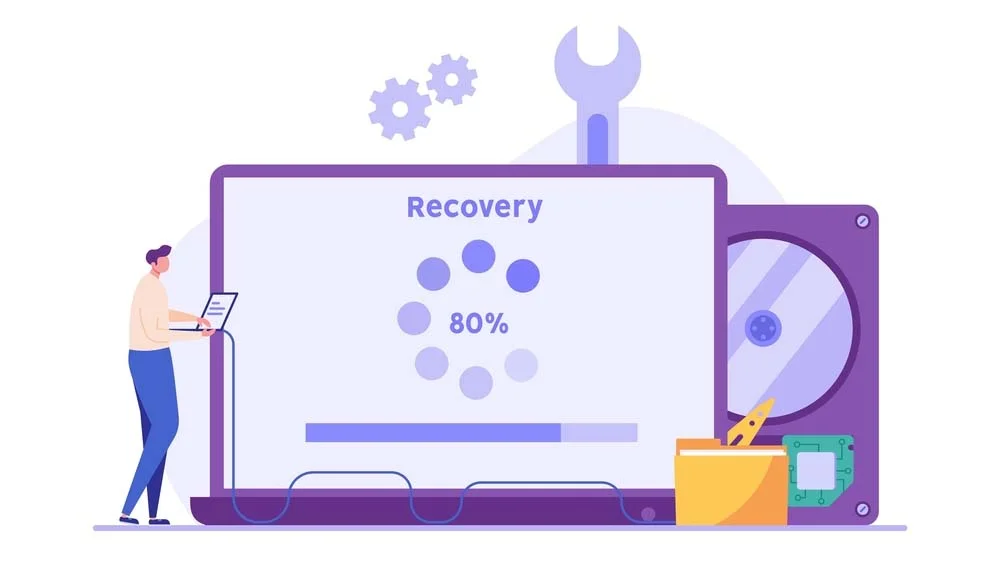
Data loss poses a severe risk to businesses, with research showing that 60% of small businesses that experience data loss shut down within six months. This statistic emphasizes the need for robust backup and disaster recovery solutions offered by reliable servers. Servers provide essential features such as regular automated backups, redundant storage systems, and quick recovery options, ensuring that your app’s data remains secure and accessible even during unexpected events.
3. Strengthening Security and Compliance in Mobile App Servers
Safeguarding Against Cyber Threats
Securing data is a fundamental aspect of mobile app development, requiring more than just basic protection. Servers offer advanced security features to defend against cyber threats, including firewalls, intrusion detection systems, and encryption protocols. Implementing these measures at the server level builds a robust defense, protecting both the app and its users from potential attacks.
Ensuring Compliance and Data Privacy
Data privacy has become a critical focus with regulations like GDPR and CCPA. Servers play a vital role in meeting these regulatory requirements by implementing access controls, maintaining data logs, and facilitating secure data transfers. These server-side security features help apps manage user data according to industry standards and legal obligations.
4. Optimizing Performance
Efficient Load management
As your app expands, handling incoming traffic effectively becomes crucial. Servers use load-balancing techniques to distribute traffic across multiple servers, preventing any single server from becoming overloaded. This approach enhances response times, increases reliability, and optimizes resource use.
Enhancing Speed with Caching
Speed is critical for mobile app performance. Implementing caching mechanisms on servers accelerates data retrieval and minimizes latency, which improves the user experience by delivering faster responses. Caching can cut page load times, boosting user satisfaction even during peak traffic.
5. Mobile App Servers: Seamless Integration and Architecture
Efficient API Integration
Servers enable smooth integration with third-party APIs, allowing apps to utilize external services like payment gateways, social media platforms, and analytics tools. This capability helps developers enhance app functionality without the need to recreate these features from scratch.
Supporting Microservices Architecture
Servers also support a microservices architecture, allowing developers to divide app functionalities into smaller, manageable components. These components can be developed, deployed, and scaled independently. This approach improves flexibility, simplifies maintenance, and optimizes resource utilization.
6. Cost Management and Resource Efficiency
Effective Resource Management
Servers provide dynamic allocation of computing resources, automated scaling based on demand, and optimized use of storage and processing power. This control helps avoid overpayment for unused resources during periods of low traffic.
Flexible Pricing Options
Many server providers offer scalable pricing models that adjust with usage. This flexibility allows developers to start with a smaller setup and expand as needed, pay only for the resources they use, and avoid large upfront infrastructure investments.
| Server Type | Pros | Cons | Best For |
| Dedicated Servers | Full control, high performance | Higher cost, requires management | Large-scale apps |
| Cloud Servers | Scalability, Flexibility | Potential security concerns | Startups and apps with varying traffic |
| Virtual Private Servers | Cost-effective, Customizable | Limited resources | Small to medium-sized apps |
| Shared Hosting | Low cost | Limited control, shared resources | Prototypes and very small apps |
This comparison table helps developers choose the right server solution based on their specific needs and budget constraints.
7. Efficient Development and Testing for Mobile App Servers

Dedicated testing environments
Servers provide isolated spaces for development and testing, which allow developers to troubleshoot issues without affecting the live app, test new features in a controlled setting, and simulate various scenarios and user loads. These dedicated environments are vital for maintaining the stability of the production app while facilitating continuous improvements.
Automated deployment processes
Servers also support automated deployment, streamlining the release of updates and new features with minimal manual intervention. This automation reduces human error, accelerates the deployment timeline, and ensures consistency across different environments. By leveraging automated deployment, development teams can focus more on creating new features and less on the complexities of updating the app.
Frequently Asked Questions (FAQs)
What types of servers are best suited for mobile app development?
For mobile app development, dedicated servers or cloud-based servers offer flexibility and scalability. Dedicated servers provide full control over the environment, while cloud servers offer scalability and ease of management.
How do servers impact app performance and user experience?
Servers directly impact app performance by managing load, processing data, and ensuring fast response times. High-performance servers with features like load balancing and caching contribute to a smoother and more reliable user experience.
What are the security risks associated with servers in mobile app development?
Servers can be vulnerable to various security threats, including data breaches and cyberattacks. To mitigate these risks, it’s essential to implement strong security measures such as encryption, firewalls, and regular security audits.
Conclusion
Servers are essential for mobile app development, acting as the backbone for scalability, security, and performance. A high-quality 2U rack server is crucial for managing modern app demands, ensuring effective data security, and seamless integration with various services. Investing in a reliable 2U rack server provides the performance and reliability needed to handle growing user bases, maintain data integrity, and optimize functionality.
As the mobile app landscape evolves, a dependable server becomes even more critical. To future-proof your app and enhance its scalability, security, and performance, consider upgrading to a 2U rack server. Evaluating your current server setup and exploring this solution will benefit both your users and your business.
The post Why Servers Are Essential for Mobile App Development appeared first on nandbox Native App Builder.
]]>The post 8 Ways To Detect App Bugs and Vulnerabilities appeared first on nandbox Native App Builder.
]]>A single flaw can damage your brand’s reputation and lead to costly consequences. So, how do you keep your app running smoothly? To start, here are the most effective ways to detect app bugs and vulnerabilities:
1. Automated Testing

One of the most efficient ways to catch bugs early is through implementing automated testing. This method uses software tools to run tests on your app, simulating different user interactions.
Automated testing is quick, reliable, and can handle repetitive tasks that would be tedious for humans. It can spot issues that might be missed during manual testing, such as edge cases or unusual inputs.
Plus, since it’s automated, you can run these tests as often as needed, ensuring that new code doesn’t introduce new bugs. Effective IT management in Concord and similar regions often includes integrating automated testing into their development workflows to maintain high-quality standards.
2. Manual Testing
Despite the efficiency of automated testing, you should never overlook the importance of manual testing. This approach involves real people interacting with your app, mimicking the actions of a typical user. Manual testing is crucial because it allows you to discover bugs that automated tests might miss, especially those related to user experience.
3. Fuzz Testing
Fuzz testing is an effective technique for uncovering hidden bugs and vulnerabilities. This approach involves feeding your app random or unexpected inputs to see how it handles them. The goal is to find inputs about app crashes or how it behaves unexpectedly, revealing potential weaknesses.
Fuzz testing is especially useful for detecting security vulnerabilities, such as buffer overflows and input validation issues. This method has proven beneficial across various industries, from financial services to fleet maintenance management software from CDWare Technologies or other service providers, where unexpected inputs could expose critical vulnerabilities.
4. Security Testing
When it comes to vulnerabilities, security testing is a must. This type of testing focuses on identifying potential security risks within your app. Cyber threats are constantly evolving, so it’s vital to ensure your app can withstand attacks.
There are various kinds of security testing, including penetration testing, which simulates an attack on your app to find weaknesses, and vulnerability scanning, which identifies known vulnerabilities in your code. Both of these methods are crucial for keeping your app secure.
5. Performance Testing

While functionality is crucial, app performance plays an equally important role in the user experience. Performance testing involves evaluating how well your app performs under various conditions, such as high traffic or limited resources. As part of this process, quality control measures are essential to ensure that your app not only meets but exceeds performance expectations.
There are several types of performance tests you can run, including load testing, which measures how your app handles heavy usage, and stress testing, which pushes your app to its limits to see how it responds to extreme conditions. When you conduct these tests, you can identify and fix performance issues before they affect your users.
6. User Feedback
One of the most valuable sources of bug detection is your users. They are the ones interacting with your app daily, so they’re likely to encounter issues you haven’t noticed. Encouraging user feedback can help you identify bugs and areas for improvement.
Make it easy for users to report bugs by including a feedback feature within the app. Monitor app store reviews and social media mentions for complaints or issues. The sooner you catch wind of a bug from your users, the quicker you can address it.
7. Beta Testing
Before launching your app to the public, consider running a beta test. Beta testing involves releasing a pre-launch version of your app to a select group of users. These users can then test the app in real-world conditions, helping you spot bugs that you might have missed during development.
Beta testing provides valuable insights into how your app performs in the wild. It’s a chance to gather feedback from real users and make necessary adjustments before the official launch. A successful beta test can significantly reduce the number of bugs that slip through to the final release.
8. Static Code Analysis
Static code analysis is another method to detect bugs by examining your code without actually running it. This technique uses tools that scan your code for potential errors, vulnerabilities, and deviations from coding standards.
Static code analysis is particularly useful for catching issues like memory leaks, security vulnerabilities, and coding mistakes early in the development process. Once you integrate static code analysis tools into your workflow, you can identify and fix issues before they turn into full-blown bugs.
Conclusion
Detecting app bugs and vulnerabilities is a critical part of maintaining a successful app. By using a combination of these methods, you can catch issues early and keep your app running smoothly. Always remember that the key to a bug-free app is a proactive approach to testing and monitoring. Keep your users happy by staying one step ahead of potential problems.
The post 8 Ways To Detect App Bugs and Vulnerabilities appeared first on nandbox Native App Builder.
]]>The post How to Manage IT Projects Like a Pro appeared first on nandbox Native App Builder.
]]>Whether you’re a newbie project manager or a seasoned tech lead looking to up your game, this guide will walk you through the key strategies to make every IT project a win. Read on to level up your IT project management game!
Understand the Project Scope

Before you start planning, it’s crucial to have a clear understanding of what the project entails. This means knowing what you need to do, what the end project goals are, and what constraints you’ll be working within.
To do this, begin by asking yourself and your stakeholders the following questions:
- What is the main objective of the project?
- What are the project deliverables?
- What is the timeline for completion?
- What resources are available?
Getting clear answers to these questions will help you define the project scope. This will guide every other aspect of your project management process. And most importantly, the better you understand the scope, the less likely you are to face scope creep—where the project’s requirements start to expand beyond the original plan.
Consider working with a reputable managed IT service provider, such as Cloud Secure Tech, to help define and refine your project scope. These experts can offer valuable insights and help you identify potential challenges or opportunities you might have overlooked.
Assemble the Right Team
A project is only as good as the people working on it. You need to assemble a balanced team with the right project management skills, experience, and attitude. Make sure you look beyond the technical expertise; seek out team players who communicate well.
Once you have your team, clearly define roles and responsibilities. Make sure everyone knows what they’re supposed to do, who they report to, and how their work fits into the bigger picture. Using project staffing software, helps to streamline this process by providing a clear overview of each team member’s responsibilities and tasks. This clarity will help you avoid confusion, ensure accountability, and keep the project running smoothly.
And if you want to make your team even more productive, partner with an experienced Managed Services Provider (MSP)! An MSP can bring valuable expertise and resources to your project, filling in any gaps in your in-house capabilities.
When researching possible MSPs, opt for local service providers. For instance, if you operate in Dallas, consider working with Prototype:IT in Dallas. Such specialized experts can help you manage your IT project. They can provide on-site support when needed, responding quickly to urgent issues.
Develop a Detailed Project Plan
Project planning is one of the most crucial phases in any IT project. A well-thought-out plan acts as a roadmap, guiding your team from start to finish.
Here’s what your project should include:
Timeline
Break down the project into phases or milestones, each with a specific deadline. This makes it easier to track progress and ensures that the project stays on schedule.
Budget
Outline the financial resources available and how you’ll allocate them. Be sure to include a contingency budget for unexpected expenses.
Resource Allocation
Determine who will be responsible for each task and ensure that they have the resources they need to get the job done. This will ensure you complete your project on time and efficiently. Avoid overallocation by using techniques like resource leveling. This helps balance workloads and makes better use of resources.
Risk Management
Identify potential risks and develop strategies to mitigate them. This could involve anything from technical challenges to delays in receiving critical resources.
Having a detailed project plan does more than help you stay organized. It also gives you a framework to measure progress and make adjustments as needed. It ensures the entire team stays on track, adapts to challenges, and delivers quality results on time. You can use a project proposal template for structuring that all to align with business goals and stakeholder expectations.
Utilize Project Management Tools
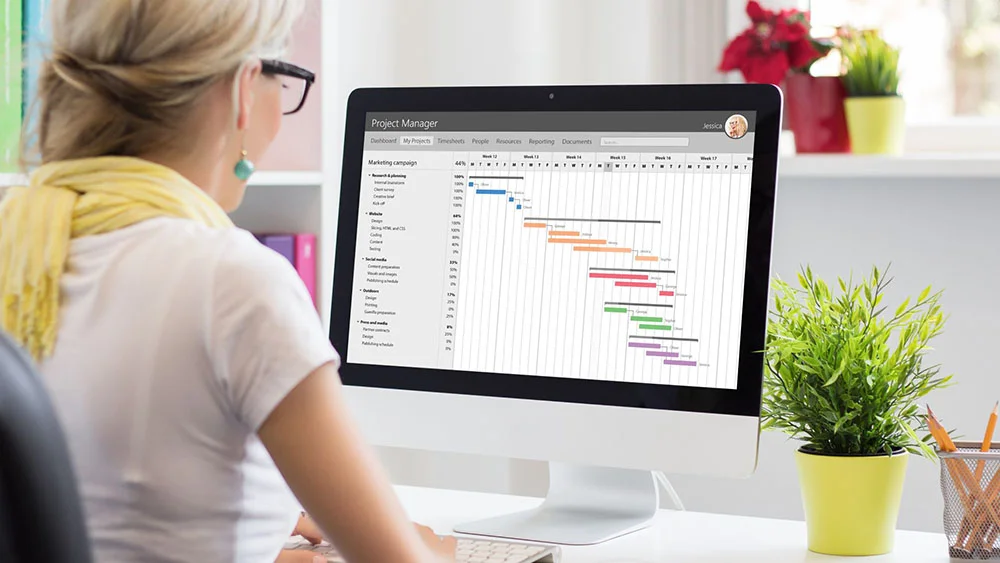
Gone are the days when managing a project meant relying on spreadsheets and email threads. Today, there are countless effective project management apps available that can help you keep everything on track.
Tools like Trello, Asana, Gantt Charts, and Jira can help make project management easier by allowing you to:
- Assign tasks to team members
- Track progress
- Communicate with your team
- Store project-related document
- Monitor deadlines
When choosing a project management tool, opt for one that works best for your team and project needs. The right project management software can significantly reduce the amount of time you spend on administrative tasks. This allows you to focus more on managing the project itself.
Encourage Open Communication
Open communication plays a vital role in holding your project together. When everyone feels heard and informed, your team becomes more than the sum of its parts. You’ll notice increased productivity, faster problem-solving, and a boost in overall morale.
But remember, effective communication is a two-way street. As a project manager, your role is more than just talking but listening intently. Pay close attention to feedback from your team and stakeholders. Their insights can be invaluable, offering perspectives you might have missed.
When you prioritize clear, consistent communication, you’re doing more than just keeping everyone in the loop. You’re building trust, fostering team collaboration, and creating a sense of shared purpose. This approach can help boost team morale and engagement, driving your project forward with increased momentum.
Stay Flexible
Regardless of how well you plan, you may still encounter some challenges. Maybe an essential resource becomes unavailable, or a technical issue arises. The key to professional project management is staying flexible and being ready to adapt when necessary.
However, this doesn’t mean abandoning your project plan at the first sign of trouble. Instead, be willing to make adjustments to your plan to keep the project moving forward.
If a major issue arises, gather your project team members, assess the situation, and develop a new plan of action. The ability to pivot when necessary is what separates successful project managers from the rest.
Focus on Quality
It’s easy to get so caught up in meeting deadlines and staying within budget that you lose sight of the most essential aspect of any project: quality. Delivering a high-quality product or service should always be your top priority.
This means:
Regular Testing
Start by setting clear quality standards early on. This will give your project team a shared goal to work towards. Regularly test if your team meets the standards to catch bugs early. This will save you a lot of time and headaches later in the project.
Request for Feedback
Encourage your team and stakeholders to share their honest opinions. Their insights can lead to significant improvements. For example, a team member might notice a usability issue, or a stakeholder might suggest a feature that would increase efficiency.
Keep Detailed Documentation
Documentation is key. Keep a detailed record of your project’s journey, including vital decisions, challenges, and solutions. This will be an invaluable resource for future projects.
By prioritizing product quality, you’ll create one that delights users and impresses stakeholders. It may require extra effort, but the rewards are well worth it. A reputation for excellence can open doors to new opportunities.
Conclusion
Managing IT projects like a professional requires a blend of careful planning, clear communication, and adaptability. By following these strategies, from understanding your project scope to prioritizing quality, you can navigate the complexities of IT projects with confidence. Remember, every project is unique, so be prepared to adapt your approach as needed. With dedication and commitment, you can consistently deliver successful IT projects that exceed expectations.
The post How to Manage IT Projects Like a Pro appeared first on nandbox Native App Builder.
]]>The post How Does AI Predict Potential Failures in Software Testing Before They Occur? appeared first on nandbox Native App Builder.
]]>AI leverages vast amounts of historical data from previous test runs, bug reports, and user feedback to build predictive models. These models analyze code changes, system architecture, and test environments to forecast areas of high risk. By focusing on these potential trouble spots, testing teams can allocate resources more effectively and catch bugs earlier in the development cycle.
The integration of AI in software testing not only improves efficiency but also enhances the overall user experience. As different types of AI testing continuously learn and adapt, they become increasingly accurate in their predictions, leading to more robust and reliable software products. This innovative approach to testing is transforming the software development landscape, enabling companies to deliver higher-quality applications faster than ever before.
Key Takeaways
- AI predicts software failures by analyzing patterns in historical data and code changes
- Predictive analytics in testing improves resource allocation and speeds up development
- AI Testing enhances software quality and user experience through continuous learning
Foundations of AI in Predictive Software Testing
AI and machine learning form the backbone of predictive software testing. These technologies leverage data and analytics to anticipate potential issues before they manifest in production environments.
Understanding AI and Machine Learning

AI systems use algorithms to process data and make decisions. Machine learning, a subset of AI, enables systems to learn from experience without explicit programming. In software testing, AI analyzes patterns in code, test results, and user behavior to identify potential defects. Neural networks, a key component of machine learning, mimic human brain function to recognize complex patterns. These networks process vast amounts of data to improve their accuracy over time. AI-powered testing tools can automatically generate test cases, prioritize testing efforts, and predict areas of code most likely to contain bugs.
The Role of Data in Software Testing
High-quality data is crucial for effective AI-driven software testing. Historical test results, bug reports, and code changes provide the foundation for predictive models. Real-time data from production environments helps AI systems detect emerging issues quickly. Continuous data collection and analysis allow for ongoing refinement of predictive models. Data cleaning and validation are essential steps to ensure the reliability of AI predictions. Inaccurate or incomplete data can lead to false positives or missed defects.
Predictive Analytics and Model Training
Predictive analytics uses statistical techniques and machine learning algorithms to forecast future outcomes based on historical data. In software testing, this approach helps identify potential failure points before they impact users. Model training involves feeding large datasets into machine learning algorithms to create predictive models. These models learn to recognize patterns associated with software defects or performance issues.
Regular model updates are necessary to maintain accuracy as software evolves. Feedback loops incorporating new test results and production data help refine predictions over time. AI models can predict not only where defects might occur but also estimate their potential impact on system performance and user experience.
Implementation and Benefits of AI-Driven Testing
AI-driven testing transforms software quality assurance through enhanced efficiency, proactive failure prevention, cost reduction, and improved user experiences. These advancements revolutionize traditional testing approaches, offering significant benefits to development teams and end-users alike.
Enhancing Testing Efficiency and Accuracy
AI technologies significantly boost testing efficiency and accuracy. Machine learning algorithms analyze vast datasets from previous tests, identifying patterns and potential weak points. This enables testers to focus on high-risk areas, reducing time spent on less critical components. AI-powered tools automate repetitive tasks, freeing up human testers for more complex scenarios. These tools can execute thousands of test cases simultaneously, dramatically increasing test coverage and speed.
Natural language processing allows non-technical team members to create and run tests, broadening participation in the quality assurance process. AI also adapts to changes in application behavior, automatically updating test scripts to maintain relevance.
Proactive Failure Prevention and Maintenance
Predictive maintenance is a key benefit of AI-driven testing. By analyzing historical data and current system behavior, AI algorithms can forecast potential failures before they occur. Anomaly detection systems continuously monitor applications, identifying unusual patterns that may indicate emerging issues. This proactive approach allows teams to address problems early, preventing costly downtime and user frustration.
AI-powered real-time monitoring provides instant alerts on performance dips or unusual user behavior. This enables rapid response to issues, often before users even notice them. By predicting future failures, AI helps teams prioritize maintenance tasks and allocate resources more effectively. This strategic approach to maintenance can significantly extend the lifespan of software systems.
Cost Reduction and Process Optimization
AI-driven testing leads to substantial cost savings and process optimization. Automated testing reduces the need for large manual testing teams, cutting labor costs while increasing test coverage. Resource management improves as AI allocates testing resources based on risk analysis and historical data. This ensures efficient use of computing power and human expertise.
Faster bug detection and resolution cycles shorten development timelines, allowing products to reach the market quicker. This can provide a significant competitive advantage in fast-paced industries. AI optimizes test case selection, eliminating redundant tests and focusing on areas most likely to reveal defects. This targeted approach maximizes the return on investment for testing efforts.
AI in Enhancing User Experience and Satisfaction

AI technologies play a crucial role in improving user experience and satisfaction. By analyzing user interaction data, AI can identify usability issues and suggest improvements. Real-time feedback mechanisms powered by AI allow for rapid iteration based on user behavior. This helps development teams quickly address pain points and enhance features that resonate with users.
AI-driven personalization tailors the user experience to individual preferences, increasing engagement and satisfaction. This can lead to higher user retention rates and positive word-of-mouth marketing. Predictive models anticipate user needs, allowing applications to proactively offer assistance or relevant features. This creates a more intuitive and responsive user experience, setting products apart in competitive markets.
Conclusion
AI is transforming software testing by predicting potential failures before they occur. Through pattern recognition and data analysis, AI tools can identify weak points and suggest targeted test cases. This proactive approach enhances test coverage and reduces the risk of critical issues reaching production. As AI capabilities continue to advance, its role in software quality assurance will likely become even more pivotal.
The post How Does AI Predict Potential Failures in Software Testing Before They Occur? appeared first on nandbox Native App Builder.
]]>The post 5 Best Practices for Implementing Automation in Testing Processes appeared first on nandbox Native App Builder.
]]>I. Align Automation Goals with Business Objectives
Any successful test automation must align with broader business objectives. Alignment is an assurance that your automation will return measurable value and be a definite contribution to the very success of the organization.
Define Clear Objectives
Before embarking on automation, there is a need to set specific goals that will easily resonate with your company strategy. By doing so, you’ll set the stage for remarkable improvements:
- 20% increase in productivity.
- 15% reduction in operational costs
These figures reflect a solid case for why automation initiatives need to have clear business-aligned goals.
Prioritize Test Cases
After defining what your goals are, you need to prioritize which test cases to automate. Focus on:
- Repetitive tests
- Time-consuming scenarios
- Processes prone to human error
Most of the Return on Investment is acquired from this automation. It is a fact that automating repetitive and high-risk test cases can yield an ROI of up to 300% by reducing the amount of time spent on manual testing.
II. Select the Right Tools and Frameworks
The time has come to choose the tools and frameworks that will help bring your automation vision into being. The right choice will make or break your initiative.
Tool Compatibility
When choosing automation tools, take their interoperability with your current technology stack into consideration. 70% of organizations say tool interoperability has a strong impact on how successful their automation initiatives are. Look for tools that:
- Integrate with your current systems
- Across multiple platforms and environments
- Scale as your automation needs grow
Selecting the best automation tools is crucial for ensuring that your strategy is effective and adaptable as your needs evolve.
Behavior-Driven Development (BDD)
It can also help bridge the gap between technical and non-technical individuals by using BDD frameworks, which allow tests to be written in languages more understandable to developers, business analysts, or any other stakeholder.
The same can be said for teams that have utilized BDD frameworks. In creating test cases, they have reported development time reduced by up to 30%. This brings efficiency and clarity at all levels.
III. Implement Data-Driven Testing
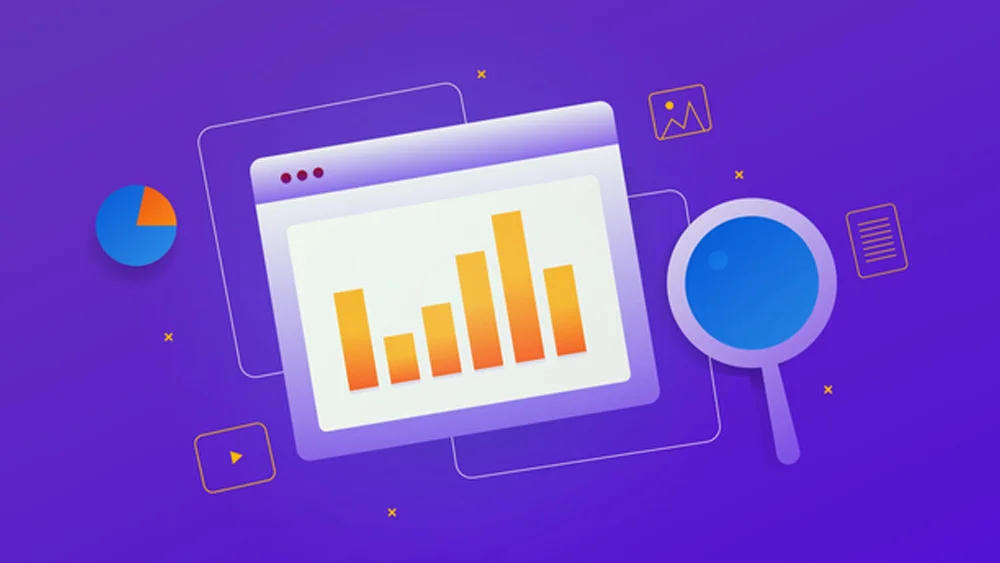
With the right tools in hand, it’s time to implement data-driven testing. This strategy decouples test data from scripts, offering greater flexibility and reusability.
External Data Sources
External data sources will let you:
- Run hundreds of test scenarios without any changes to your test code.
- Expand test coverage by 50%.
- Keep pace with changing test requirements.
Maintain Test Data Quality
The success of data-driven testing is nearly directly proportional to the quality of your test data. Ensure that your data is:
- Accurate
- Relevant
- Up-to-date
High-quality test data can reduce test flakiness by 40%, leading to more reliable test outcomes and fewer false positives.
IV. Integrate Automation into the CI/CD Pipeline
To get the most out of test automation, you want to integrate it into your Continuous Integration and Continuous Delivery pipeline.
Continuous Integration and Delivery
By integrating automated tests into your CI/CD pipeline, you can:
- Integrate automated testing into your CI/CD pipeline and:
- Find defects earlier in the development cycle
- Reduce average time to detect defects by 40%
A significant improvement in overall software quality
Integrating automated testing means that probable issues are known and solved far away from production.
Automated Feedback Loops
Set up feedback loops in real-time to let developers identify and fix defects on time. This kind of proactive attitude can:
- Reduce developer time spent on issue fixes by up to 30%.
- Improve code quality from the outset
- Enhanced collaboration between the Development and Testing teams
V. Continuous Monitoring and Maintenance

Even after deeply integrating automation into your CI/CD pipeline, the journey does not stop here. Continuous monitoring and maintenance are very important in keeping your automated test scripts relevant and efficient.
Regular Updates and Refactoring
As your application evolves, so should your automated tests. In other words, periodically refactor and update your test scripts to keep up with the existing functionality and increase test efficiency by reducing technical debt.
Monitor Test Results
Use dashboards and analytics tools to track test execution and results continuously to help you: Identify patterns in test failures
- Address recurring issues promptly
- Identify patterns in test failures
- Improve overall test quality and reliability
These monitoring practices allow a developer to be confident that their automation efforts are still relevant and will continue to provide value over time.
Comparison Table: Manual vs. Automated Testing
Further illustrating the benefits of automation, consider the following comparison table between manual and automated testing across several key factors:
| Factor | Manual Testing | Automated Testing |
| Speed | Slower, limited by human capacity | Faster, can run 24/7 |
| Accuracy | Prone to human error | Consistent results |
| Cost | Higher long-term costs | Higher initial investment, lower long-term costs |
| Coverage | Limited by time and resources | Broader coverage possible |
| Repeatability | Difficult to replicate exactly | Easily repeatable |
| Flexibility | More adaptable to changes | Requires updates for changes |
| Complex scenarios | Can handle unpredictable scenarios | Excels in repetitive, predictable tests |
This table points out the strengths of automated testing in places like speed, precision, and long-term cost-effectiveness.
Conclusion
Automation in testing processes is no longer a luxury; it’s a necessity for staying competitive in the fast-paced software development market. You will automate as much as you want: aligning your automation goals to business objectives, choosing the right tools, implementing data-driven tests, making sure to integrate with the pipeline of CI/CD, and keeping a robust monitoring system in place for improving both testing efficiency and software quality.
Keep in mind that your journey toward effective test automation is one of continuous improvement. Keep reassessing and improving your approach so that your automation strategy will keep pace with your organization’s evolving needs as well as changes in technology.
Frequently Asked Questions (FAQs)
How do I know what tests to automate?
The test cases that are more repetitive, time-consuming, and highly subject to human failure should be run first of all. Keep a focus on regression tests, high-impact areas, and critical business processes. Consider how often the tests will be run and how stable the feature under test is.
What are common challenges I’ll face when integrating automation into CI/CD?
Common challenges include stabilizing the tests, test data management, and making automated tests efficient in their performance within the constraints of the pipeline. You may also be having problems with things like test environment consistency or, in general, an increase in the level of complexity brought by a CI/CD pipeline.
How often should you review and update automated tests?
It would be desirable to review automated tests at least once after every major update or release of an application. This would ensure they are relevant to the current functionality and performance expectations. Also, do a quarter-long review of your test suite. This will be important in detecting obsolete tests, updating test data, and refactoring the test execution.
What metrics should I track to know whether my test automation is successful?
Some of the key metrics include:
- Test execution time
- Defect detection rate
- Test coverage
- ROI of automation
- Reduction in manual testing effort
- Time saved in regression testing
How do I know whether my team has the necessary skills for test automation?
Invest in the team’s automation-related skills. You can consider hiring specialists or consultants who will help you with initial automation efforts. Knowledge sharing within the team and hands-on experience with automation tools and frameworks would help immensely.
The post 5 Best Practices for Implementing Automation in Testing Processes appeared first on nandbox Native App Builder.
]]>